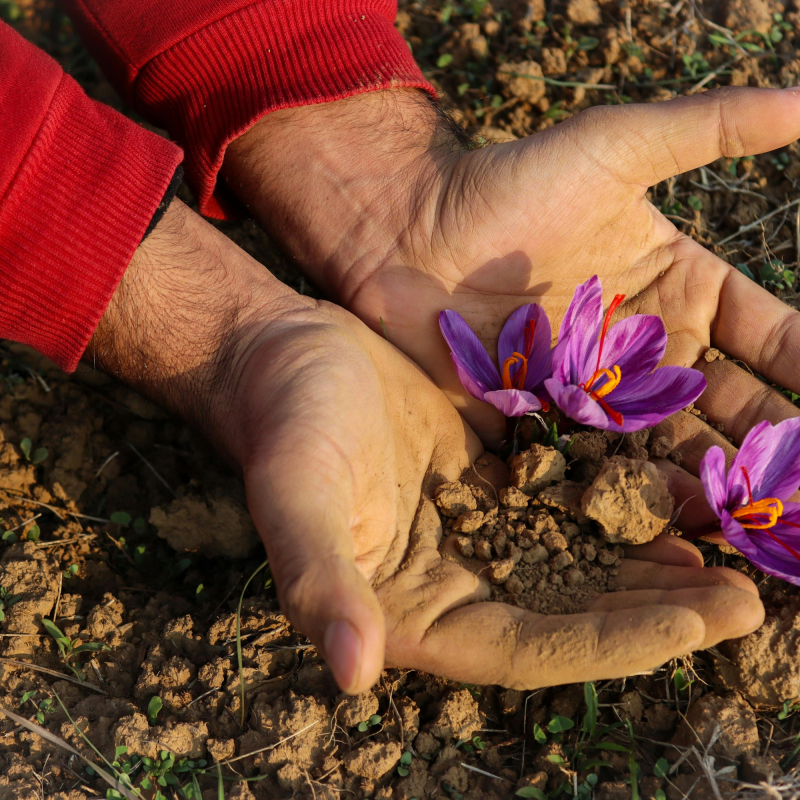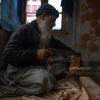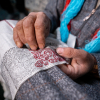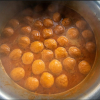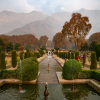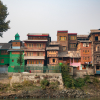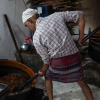Zafran in Persian or kesar in Hindi, the very mention of the word conjures images of vibrant crimson threads, their delicate aroma whispering of exotic lands and culinary delights. Scientifically classified as Crocus sativus and often referred to as ‘red gold’, saffron is believed to have originated in Persia (modern-day Iran) and is now cultivated across the globe, including Central Asia, the Mediterranean region, Asia, Europe, North Africa and North America. For Srinagar, and the neighbouring fields of Pampore, saffron is more than just a spice—it serves as a cultural touchstone. While its culinary and medicinal uses are well-documented, the story of Kashmiri saffron—locally known as kong—extends far beyond the kitchen and the apothecary, delving into the realms of identity, resilience and the delicate balance between tradition and modernity.
Historical Roots and Legends
The narrative of Kashmiri saffron intertwines historical records with local lore. While the precise date of its arrival in the region remains a subject of debate, its presence is firmly established in both ancient texts and popular narratives. The twelfth-century Kashmiri poet Bilhana, in his celebrated work Vikramankadeva Charitam[i], suggests that saffron cultivation originated at the Takshaka Naga, a sacred spring near Zewan. This account aligns with the later Mughal documentation in Abul Fasl’s Ain-i-Akbari[ii], which describes an annual pilgrimage to the Takshaka Naga spring at the start of the saffron cultivation season (in the Hindu month of Jyaishtha). Walter Lawrence, in The Valley of Kashmir[iii], recounts a popular myth where a grateful Naga chieftain, cured of an eye ailment, gifted a saffron bulb to a vaidya (physician) of Padmapur (present-day Pampore), thus introducing saffron cultivation to the region. This event is said to have occurred during the seventh-century reign of Lalitaditya Muktapida, a powerful king of the Karkota dynasty known for his patronage of arts and architecture, who is frequently linked to saffron’s formal introduction in popular legend. However, this narrative contrasts with evidence suggesting saffron’s presence in Kashmir predates Lalitaditya’s time.
Early Chinese Buddhist traveller Hiuen Tsang (seventh century CE), in his Travels in India, noted the existence of saffron, while another Chinese traveller, O’Kong, during his journey through the region in the eighth century CE, documented the use of kesar (saffron) in Buddhist viharas for sacred rituals, as paint for religious scrolls and thankas, further corroborating this historical timeline.[iv]
Another widely known legend attributes saffron’s introduction specifically to the twelfth century, crediting the Sufi saints Khawja Masood Wali and Sheikh Sharif-u-Din Wali. Legend has it that after recovering from a serious illness with the aid of a local chieftain, the grateful saints gifted a saffron crocus bulb as a token of appreciation, thereby initiating its widespread cultivation in Kashmir. By the Mughal era, saffron had firmly established itself as a highly prized commodity. The Ain-i-Akbari includes records of extensive cultivation across 12,000 bighas in Pampore, with fields stretching for about a kos (approximately 3.2 km) at Andarki. Tuzk-e-Jahangiri records Jahangir celebrating his fifty-first birthday at Pampore and how he was impressed by the scale of saffron production, recorded an annual yield of approximately 500 Hindustani maunds (roughly 18,600 kg), claiming it was unparalleled globally.[v] Today, saffron remains integral to Kashmiri culture, infusing everything from elaborate celebratory feasts (wazwan and its rich, saffron-infused gravies) to the traditional kahwa.
The Pampore Fields
In Jammu and Kashmir, four districts—Pulwama, Budgam, Srinagar and Kishtwar—grow saffron. However, the heart of saffron cultivation lies in the undulating fields of Pampore, a town located approximately 15 kilometres southeast of Srinagar, often referred to as the ‘Saffron Town of Kashmir’. The very act of cultivating saffron, from the meticulous planting of corms (the bulb-like underground stem) to the painstaking hand-picking of delicate stigmas, constitutes an almost sacred ritual, passed down through generations of families like a precious heirloom. Approximately 30,000 families in the Pampore area are associated with saffron cultivation. According to the 2011 census, about 11,000 women in the Kashmir Valley work in the saffron farming sector.
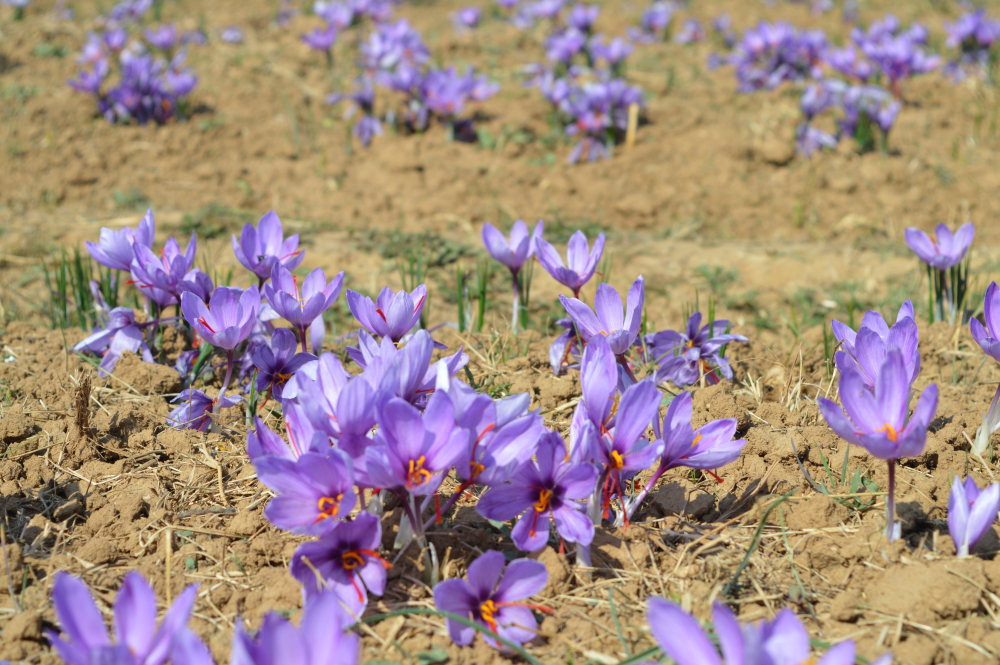
Saffron fields in Pampore. (Picture courtesy: Umar Sami/Wikimedia Commons)
In Pampore, the landscape transforms into a breath-taking sight of purple in autumn, as countless Crocus sativus flowers simultaneously burst into bloom, and the air is thick with the sweet, almost intoxicating fragrance of saffron. These fields, typically situated on wudar or karewa lands with a specific soil composition rich in potassium and nitrogen, undergo careful preparation and maintenance. Farmers prepare the land by creating square beds, each measuring 1.5 meters, with narrow trenches on all sides to prevent water accumulation, ensuring optimal drainage and aeration, essential for the delicate saffron corms.
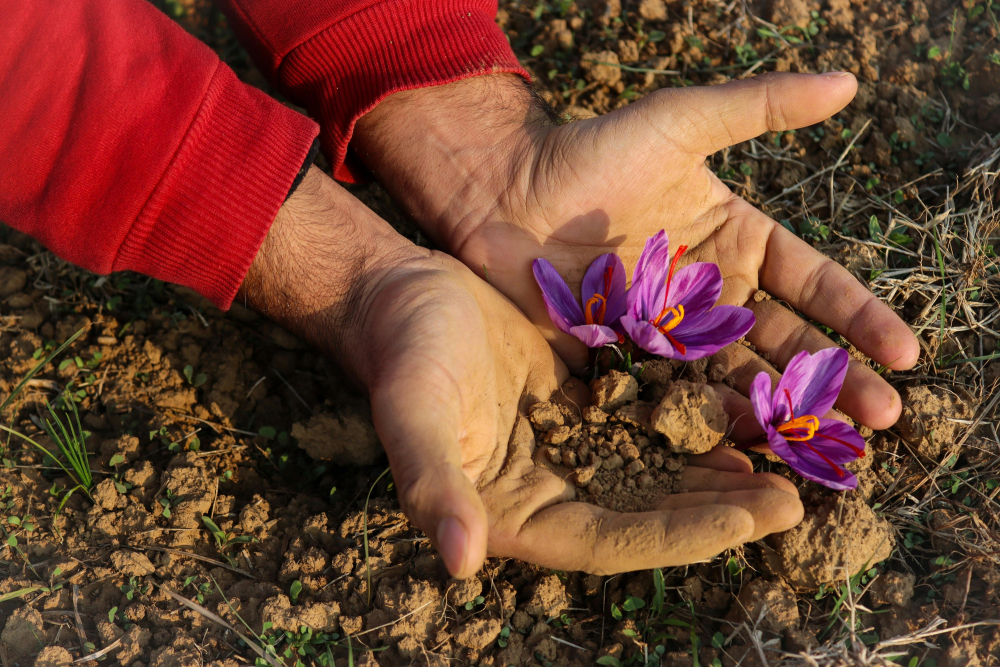
Saffron flowers. (Picture courtesy: Rubaitul Azad/Pexels)
The process of saffron cultivation is labour-intensive. The corms, typically sourced locally and often passed down through generations of farming families, are planted in late summer, usually September, in well-drained, slightly alkaline soil. The selection and preservation of healthy corms is a crucial step, ensuring the quality and yield of the saffron crop. Farmers use traditional tools like kuh (a type of hoe) and zoon (a rake) for land preparation and corm planting. The flowers bloom for only a few weeks in autumn, usually late October and early November. The harvesting process is a race against time, as the delicate stigmas must be plucked before they wither. This task is performed almost entirely by hand, often by women from saffron farming communities who have been doing this for generations, their nimble fingers carefully separating the precious stigmas—just three per flower—from the petals. This meticulous process, traditionally carried out in the early morning hours, requires skill and patience. The harvested flowers are collected in baskets and brought to homes or designated processing centres. The separated stigmas are then dried, a process that requires precision and care to preserve their colour, aroma and flavour. Traditionally, this involved drying the stigmas in controlled temperature, but modern methods also include using specialised drying equipment to control temperature and humidity. After processing, the complete form with both red and yellow parts is known as lacha. The red stigmas, the darkest ones, are the most expensive variety known as mongra. Just one strand is enough to infuse an entire dish with a rich aroma and flavour. And then the separated yellow part, known as zarda, too, is used for medicinal purposes and in cosmetics. It takes thousands of flowers, often upwards of 1,60,000, to produce just a kilogram of finished saffron, highlighting the extraordinary effort involved in its production.
Beyond the Stigma
The story of kong extends far beyond its vivid hue or intoxicating aroma; it is a testament to Kashmir’s deep-rooted traditions and evolving landscapes. From the sacred lore of Takshaka Naga to the undulating karewas of Pampore, saffron has both shaped and been shaped by the region’s complex history. Yet, its continued cultivation faces significant challenges. Climate change has disrupted the delicate environmental conditions required for optimal yield, leading to erratic blooming patterns and reduced productivity. The karewa soil, once the lifeline of Pampore’s saffron fields, is increasingly under threat due to unregulated construction activities and accelerated soil erosion. Moreover, the influx of lower-cost Iranian saffron in global markets has placed considerable economic strain on Kashmiri farmers, forcing them to compete with mass-produced varieties.
Recognising these challenges, the National Saffron Mission (NSM) was introduced in 2010 to revitalise saffron farming in Kashmir through targeted irrigation projects, technological interventions and direct financial support for struggling farmers. While the initiative was commendable, inconsistencies in implementation and climate unpredictability remain hurdles.
In response, a new generation of saffron cultivators is turning to innovation—indoor saffron farming, a promising alternative method that cultivates saffron in controlled environments using advanced hydroponics. By eliminating dependence on unpredictable seasonal conditions, this approach not only stabilises yields but also consistently ensures higher quality saffron. Experiments with vertical saffron farming have also helped maximise production within limited space, offering a sustainable path forward.
Despite these technological transformations, the essence of kong remains deeply rooted in the land and the lives of those who cultivate it. Each strand of crimson saffron carries the wisdom of centuries-old practices and the hope of an evolving future while continuing to weave itself into the cultural and historical landscape of Kashmir.
[i] Bilhana, Vikramankadeva Charitam: 18-70
[ii] Abu'l-Fazl 'Allami. Ain-i-Akbari. 363-65
[iii] Walter Lawrence, The Valley of Kashmir: 342
[iv] Kaul, Kesar: The cultural geography of Kashmir. 227
[v] The Tūzuk-i-Jahangīrī Or Memoirs Of Jahāngīr. 92-93
Bibliography:
Abu’l-Fazl ‘Allami. Ain-i-Akbari. Vol. 2. 2nd ed. Edited by Jadunath Sarkar. Calcutta: S.C. Sarkar, 1949.
The Tūzuk-i-Jahangīrī Or Memoirs Of Jahāngīr.. Translated by Alexander Rogers and Henry Beveridge. Royal Asiatic Society, 1909–1914.
Kaul, Arun. ‘Kesar: The cultural geography of Kashmir.’ India International Centre Quarterly 27, no. 4/28, no. 1 (Winter 2000/Spring 2001), 226–34.
Kamili, A., and A.A. Wani. ‘Saffron: A legendary crop of Kashmir Himalaya.’ Journal of Himalayan Ecology and Sustainable Development 2, no. 1 (2006): 1–8.
FAO. ‘Saffron Heritage Site of Kashmir in India.’ GIAHS Saffron Site Report (part-1). Food and Agriculture Organization of the United Nations, 2010.
This essay has been created as part of Sahapedia's My City My Heritage project, supported by the InterGlobe Foundation (IGF).
